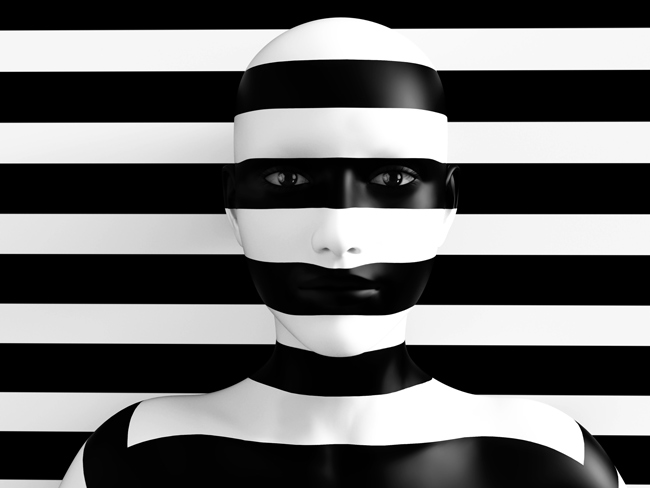
While analyzing performance in Google Search Console (GSC), some site owners have reported a strange situation with impressions and position (and some even believe it’s a bug). I’ve seen this many times and I often get questions about it from site owners left scratching their heads after witnessing those metrics in their own stats. Although it’s easy to chalk it up to a GSC bug or anomaly, the answer can be hiding in plain sight.
I’m referring to seeing a site ranking very highly in the search results (according to GSC), but when you check the search results, you can’t find the page ranking. And even stranger, you might see that #1 or #2 ranking with insanely low click-through rates compared to other top rankings (which is often a sign of the situation I’m covering today).
So, what can cause this strange situation in the Google search results with high rankings but insanely low click-through rate? Well, it’s sometimes just an image pack ranking in the SERPs or an image ranking in a knowledge panel. Most site owners scan right past those SERP features and look for high rankings in the 10-blue links, when those very features are often the culprit. Let’s explore this situation in greater detail.
A quick reminder about how Google calculates impressions and position in GSC:
Last year I wrote a post demystifying clicks, impressions, and position in Search Console. In my post, I covered how image blocks were tracked and calculated. For example, if Google was ranking an image block #1 in the SERPs and that block contained 10 images, then each of those images take on the rank of the entire block. Therefore, your image, even if ranking seventh within the image block, would rank #1 in GSC.
If you are surprised by that, which is totally understandable since it’s confusing, then you should definitely read my entire post on Search Engine Land. There are several other surprises in the article that can help you better understand tracking performance metrics in GSC.
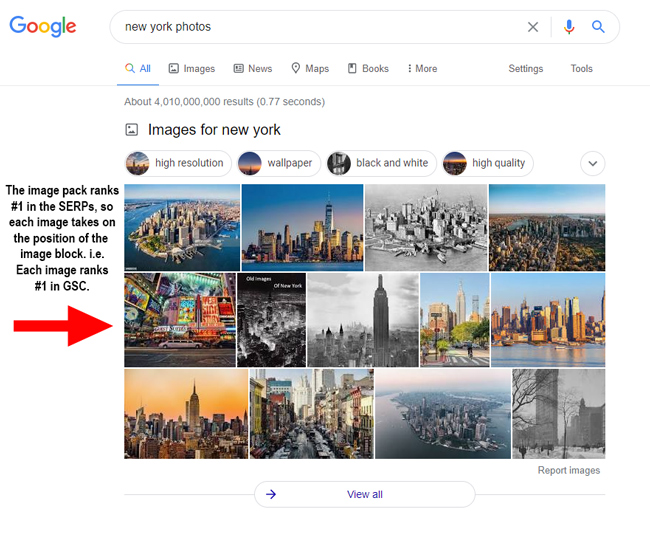
Google only counts clicks outside of the search results and not query refinement links. But is that really correct??
To register an impression, Google explains that a link must lead out of the Google search results and to your site. If it’s just a query refinement link (which generates a new search result), then that link will not register an impression.
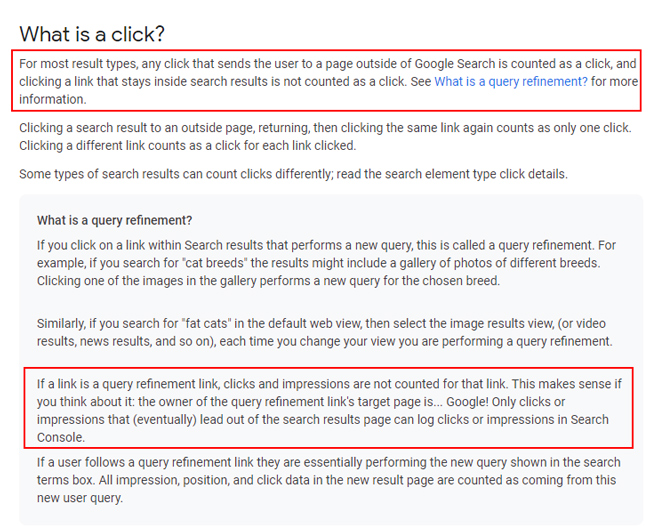
This is where image packs stand out (and maybe not in a good way).
Image packs contain a series of images from various websites. When clicking a thumbnail, you are not taken directly to the site and outside of the search results. Instead, you are taken to Google Images with that image highlighted and expanded. Then, if you click the image again, you are taken to the third-party site. So the click leading outside of Google doesn’t happen from the web search results. It happens from Google Images.
So, if that’s the case, then images within image packs in the web search results should NOT register an impression. But they do. And that’s super confusing for many site owners, and even experienced SEOs.
For example, here is an image pack ranking in Google for “new york photos”. Notice the image pack ranking at the top of the search results (web search).
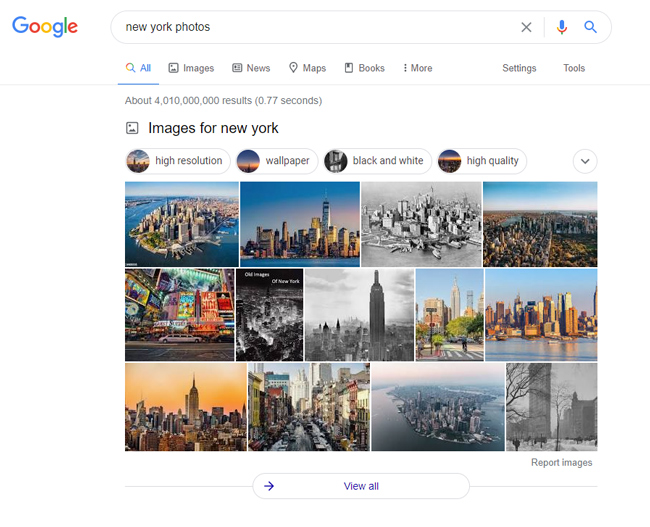
When clicking an image in the image pack, you are taken to Google Images and not the third-party site that contains the image. But… that image will register an impression and position in GSC. More about that soon (with evidence). After clicking the second image in the image pack, I was taken to Google Images with that image expanded:
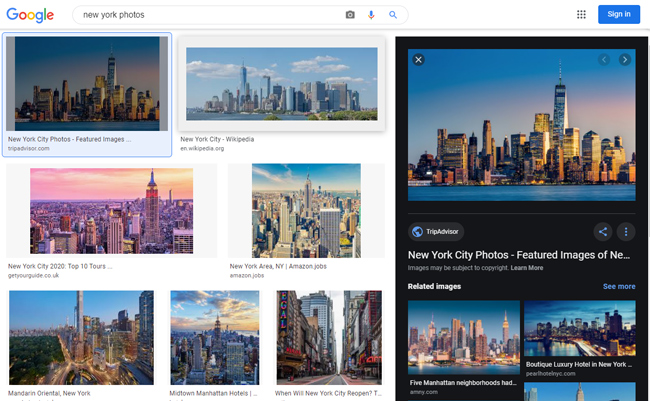
The reason that urls from publisher sites do gain an impression is that the image tag’s title attribute contains the url for the site. And that url is the one gaining the impression and position in your GSC reporting. Here is the code showing the title attribute containing the site’s url:
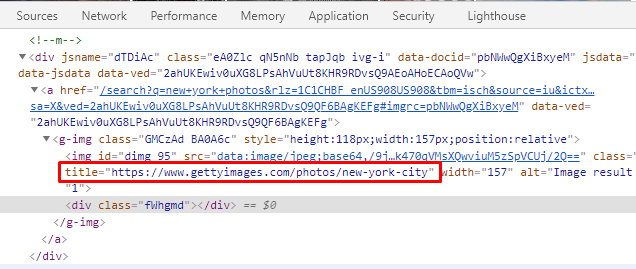
To clarify, the image doesn’t link to third-party sites. The link is to Google Images and not to your site. But, the image tag’s title attribute does contain your link, so that is what gains an impression and click in GSC.
Confusing? Yep… And can that throw off your reporting? Affirmative.
But it’s not just image packs. It’s knowledge panels as well:
Just a quick note that this also impacts knowledge panels that contain a block of images. So, if you search for “tesla model 3” and see the knowledge panel containing a number of images, those will behave the same way from a tracking standpoint. They will take on the rank of the knowledge panel (the parent search feature). And to make things even more confusing, a knowledge panel will often rank on the right side of the SERP on desktop, which means it can be in position #11, #12, #13, etc. depending on the query and the resulting search results. The knowledge panel below ranks #11 for this query on desktop:
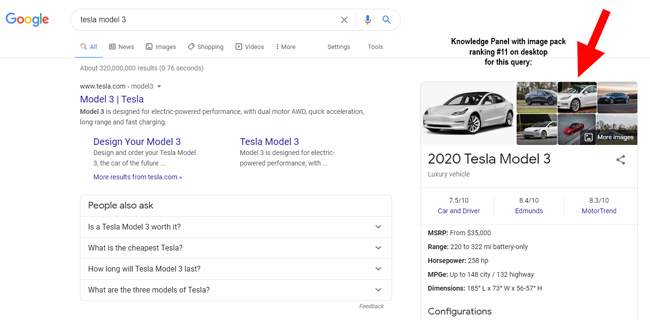
And that same knowledge panel on mobile is at the top of the search results (which would show up as position of #1 in GSC). So you really need to filter your GSC reporting by desktop and mobile to see an accurate position for queries that are impacted.
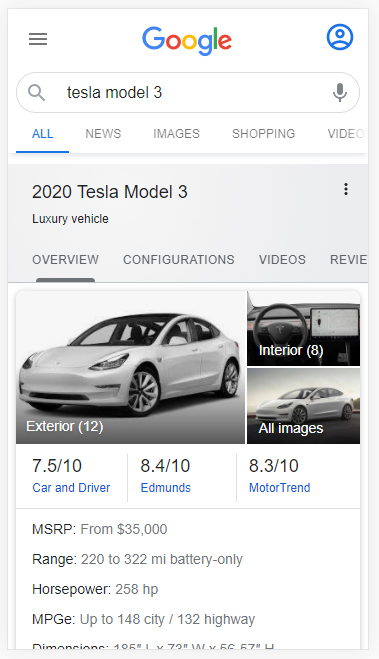
Now, if you have a lot of images ranking in the SERPs, you might have squeezed your coffee mug so hard it splintered into 35 pieces while reading this post. That’s ok, just clean up the coffee, brew another cup, and get ready for some evidence. Below, I’ll cover several different examples of image packs and knowledge panels registering impressions and clicks in GSC based on simply an image ranking in those features (that actually lead to Google Images and not to the third-party website).
Examples of image pack rankings with GSC metrics:
Below, I’ll provide three examples of image packs or knowledge panels yielding high rankings and low CTR in GSC. I’ll provide the SERP, GSC metrics for web search, and then GSC metrics for image search. I think you’ll get the picture, so to speak. :)
Here’s an image pack ranking for the query “rainbow”. The pack ranks #1 in the SERPs, which means the images take on the rank of the pack (so they also rank #1):
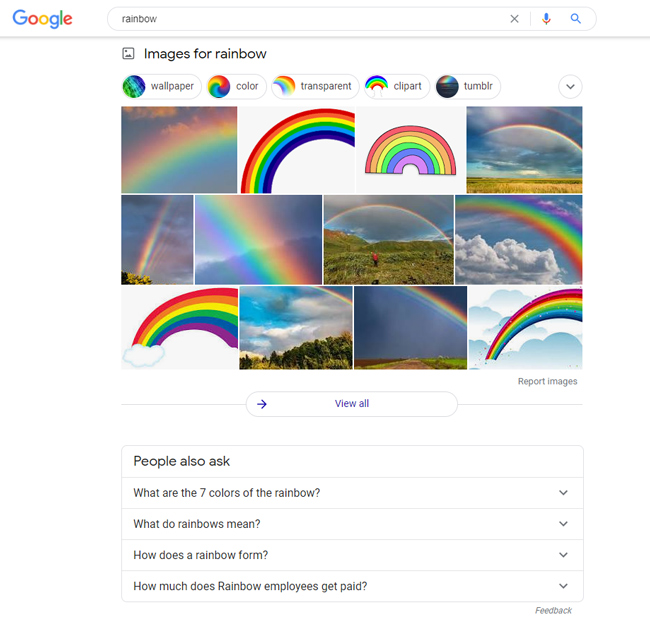
For image search in GSC, you can see the image has yielded many clicks… but that’s image search. Web search is a different story.
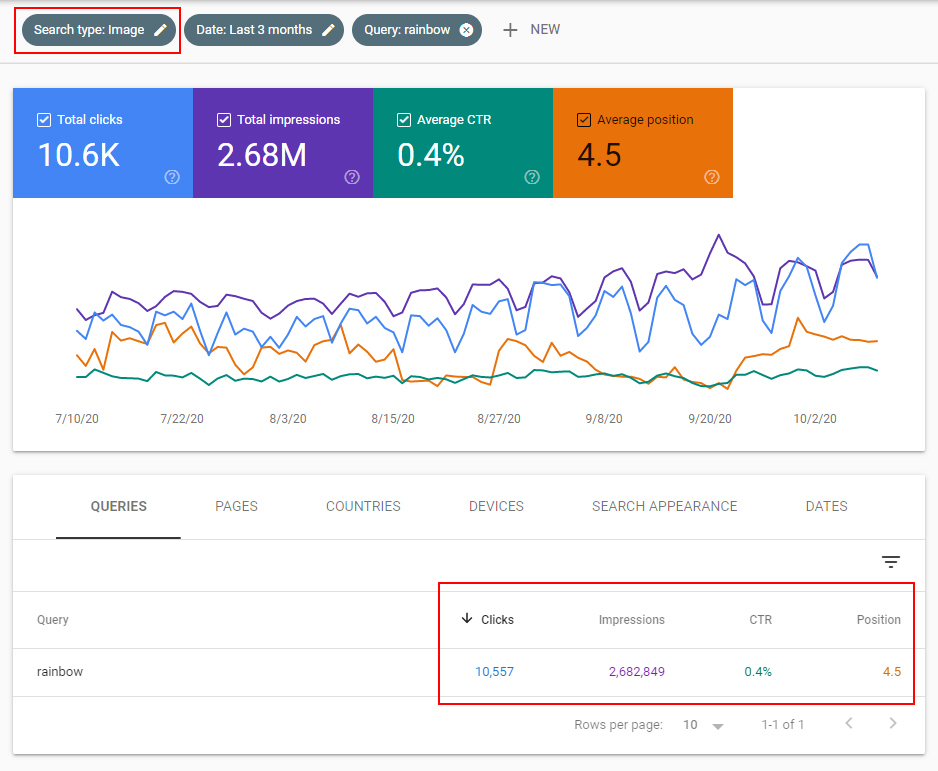
For web search, there are almost 3M impressions, but only 430 clicks (for a CTR of basically 0%). This is exactly what can happen when an image ranks in an image pack in the web search results:
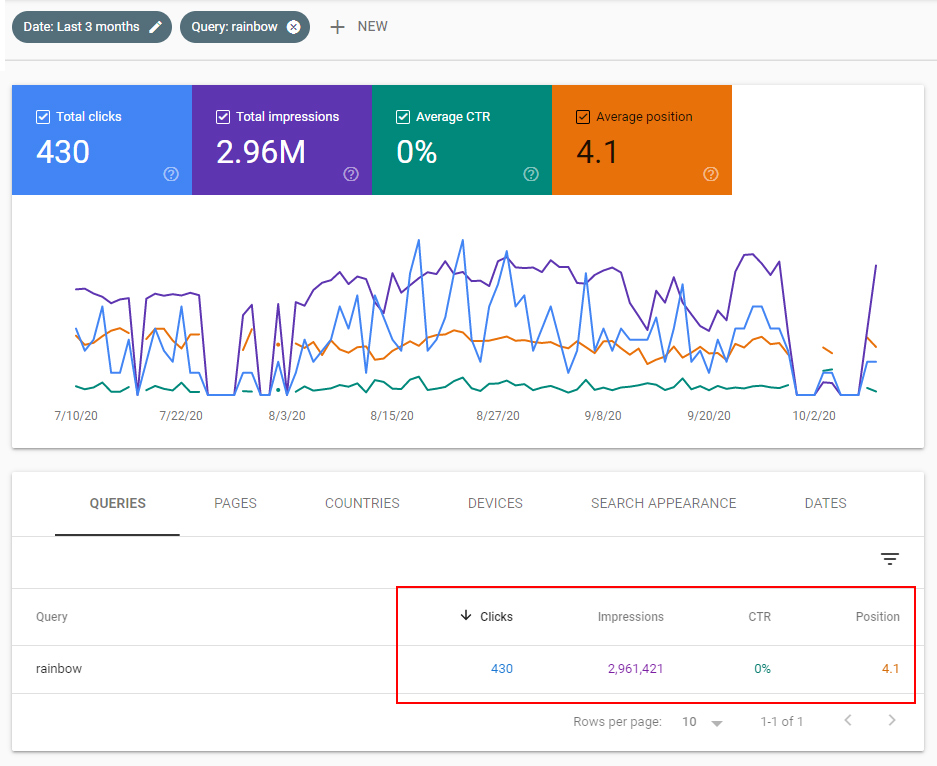
For the second example, here’s an image pack ranking #2 for the query “jaguar suv”.
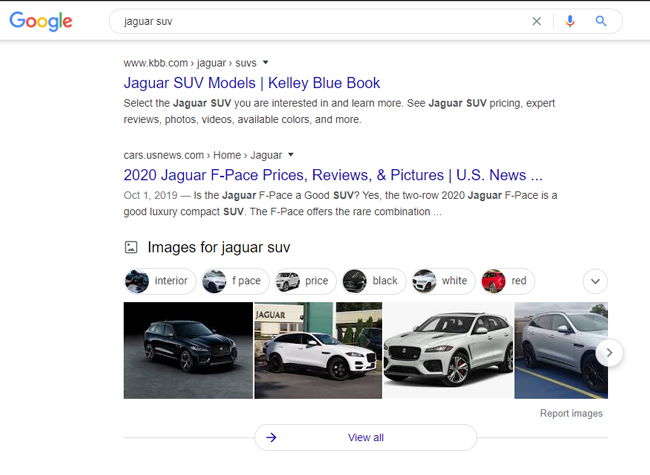
In image search, you can see 562 clicks based on 55K impressions for a CTR of 1%:
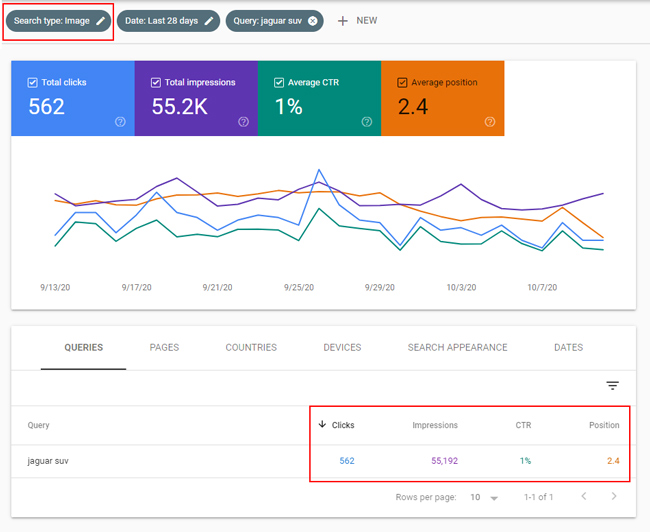
But in web search, there have only been 70 clicks based on 43K impressions. The CTR is only .2%. So although GSC shows strong rankings and 43.8K impressions, the reality is that the ranking leads to almost no traffic at all from Google. Again, this can cause a lot of confusion while site owners are analyzing their performance in Search:
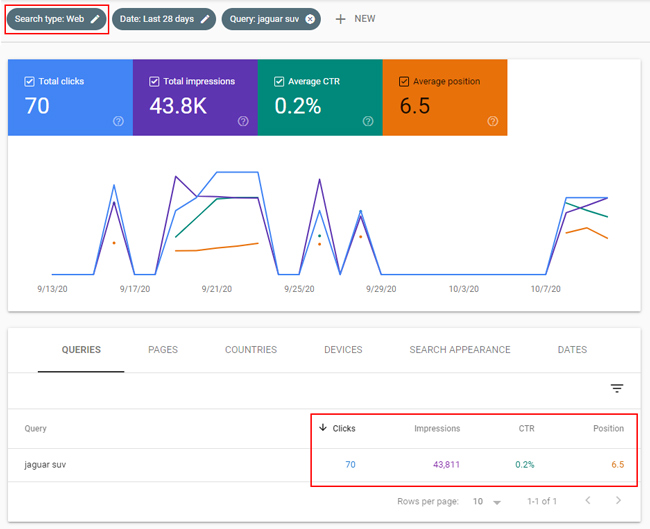
The last example I’ll provide is from a knowledge panel. There are images ranking in the knowledge panel that make for an interesting case. On desktop, the knowledge panel ranks on the right side (in position 11 for this query):
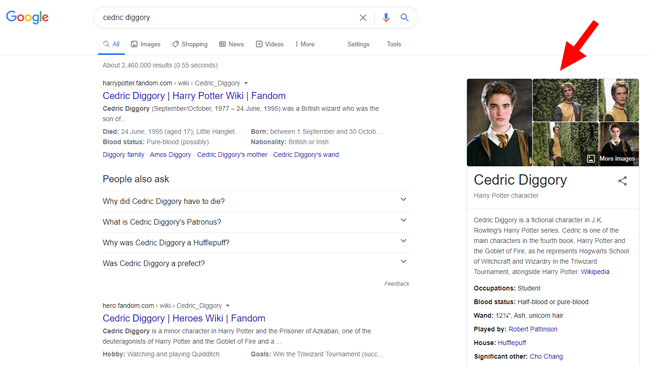
But on mobile, the knowledge panel ranks #1 at the top of the SERP:

The images in the knowledge panel for desktop rank #11 and the images in the knowledge panel on mobile rank #1. The following screenshots from GSC show this is the case. Here are the desktop stats. Yep, just 9 clicks with a position of #11 since the knowledge panel ranks on the right side:

And here are the mobile search stats. 210 clicks with a position of #1 (since the knowledge panel ranks at the top of the SERP on mobile). There were 242K impressions and just 210 clicks:
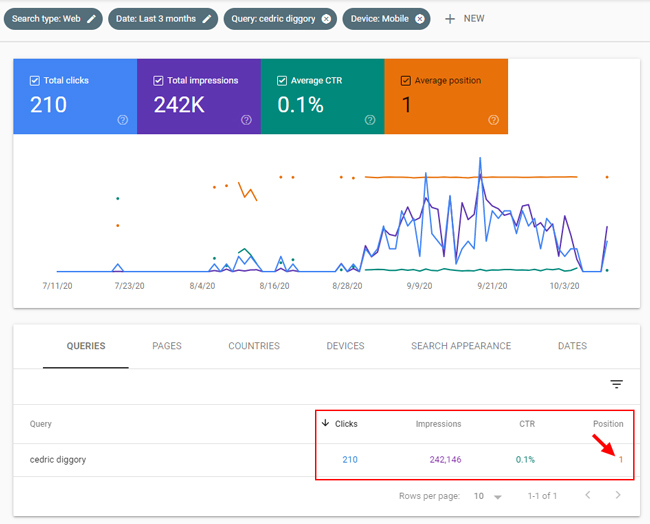
And compare both of those to the image search stats… 3.3K clicks for the query. A big difference and shows the gap between images ranking in web search (via image packs or knowledge panels) versus ranking in image search:
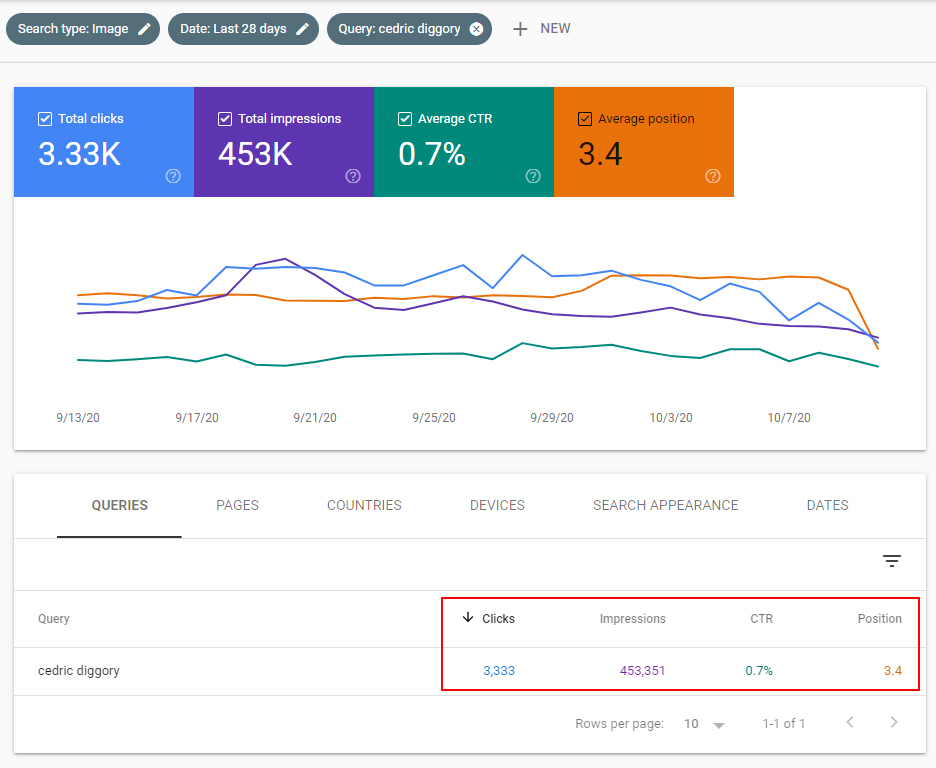
Image Packs, Knowledge Panel Images, and GSC: Key Takeaways
As you can see from the examples above, images ranking in image packs and knowledge panels can definitely yield some strange metrics in Google Search Console. It’s important to understand this, since it can lead to a lot of confusion while analyzing a site’s performance in Search.
Below, I’ll cover some key takeaways below based on my own research.
- First, if you think GSC is wrong, check again, but keep your eyes peeled. There may be an image ranking in an image pack or a knowledge panel that’s throwing off your reporting.
- I would fully understand how GSC calculates metrics. There are some very interesting and confusing situations based on various SERP features (especially on mobile). I would read my post about calculating clicks, impressions, and position in GSC and Google’s help document covering the subject. Between the two, you can gain a stronger understanding of how everything is calculated.
- High rankings with extremely low click-through rate could be a sign you are experiencing this issue. If you see high rankings, but very low CTR, that could mean an image is ranking well in web search either within an image pack or a knowledge panel.
- Although Google explains that only links outside of the search results register an impression, that’s not the case for images in the web search results (within image packs and knowledge panels). The image tag’s title attribute contains the url of the page containing your image, and that’s what is gaining an impression and click.
- This is a great example of why it’s tough to look at aggregated statistics in GSC. It takes many different variables into account. The devil is in the details (like everything else in SEO). For example, those images ranking well in web search could absolutely be dragging down CTR overall. Make sure you know that while reviewing your stats.
- It’s also important to understand that Google’s broad core updates can impact Image Search rankings and images that are ranking in the Web Search results (in image packs, knowledge panels, etc.) Google confirmed this to be the case after I wrote a post explaining what I was seeing across sites heavily impacted by core updates.
Summary – Look for image packs and knowledge panels throwing off your reporting:
If you see high rankings with crazy-low click-through rates in GSC and you’re confused about why that’s showing up, you might want to check for images packs or knowledge panels for those queries. You might have images ranking in one of those two search features. It’s a great example of when ranking number one doesn’t really mean very much. Users often scan right by those images in the SERPs, and when that happens, you can end up with a false sense of accomplishment and little traffic to your site. So again, keep your eyes peeled. The answer might be hiding in plain sight.
GG
